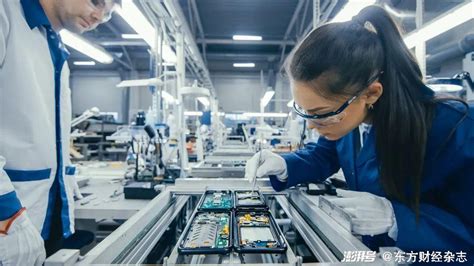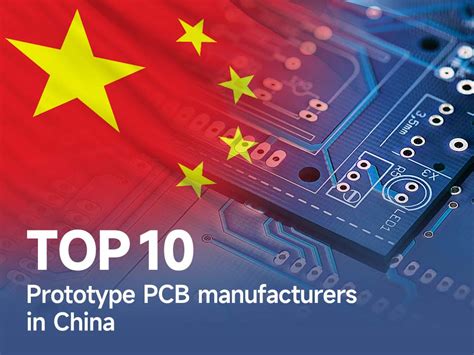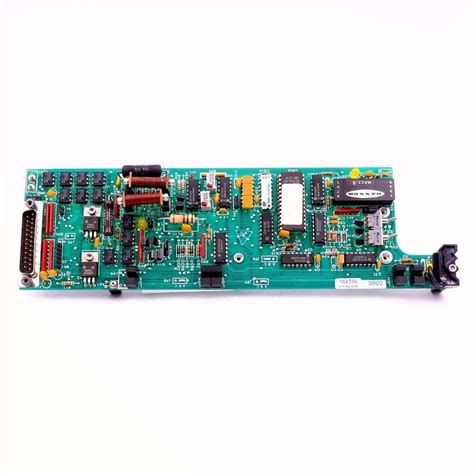Revolutionizing Production: The Future of Automated Electronics Assembly
Key Takeaways
The evolution of automated electronics assembly signifies a pivotal shift in the manufacturing domain, particularly in the realm of pcb assembly and pcba. It is essential to recognize that the integration of automation is not merely a trend but rather a fundamental transformation that enhances both quality and productivity. The use of advanced technologies like robotics and artificial intelligence in production lines significantly boosts the accuracy of pcba, allowing for intentional design improvements and minimizing human error. Additionally, automation accelerates production timelines, enabling manufacturers to respond swiftly to market demands while simultaneously reducing operational costs. This newfound efficiency is complemented by superior sustainability practices, as automated systems often require less energy and generate less waste compared to traditional methods. Businesses that embrace these changes position themselves at the forefront of innovation, ultimately leading to improved customer satisfaction by delivering higher-quality products in shorter time frames. As the landscape continues to evolve, stakeholders in electronics manufacturing must remain attentive to these advancements, ensuring they harness the full potential of automated electronics assembly for future success.
Introduction to Automated Electronics Assembly
The landscape of electronics manufacturing has experienced a groundbreaking shift with the advent of automated electronics assembly. This innovative approach has not only redefined efficiency but also enhanced quality across the board. Central to this transformation is pcb assembly (printed circuit board assembly), a critical process that involves soldering components onto boards, a task that has traditionally relied heavily on human labor. With pcba (printed circuit board assembly) automation, manufacturers are leveraging advanced technologies to boost precision and speed while minimizing errors.
As we delve deeper into this transformation, it becomes evident that automation plays an indispensable role in modern manufacturing practices. Utilizing automated systems minimizes the risk of human error and increases production capacity. For instance, integrating robots and automated optical inspection systems ensures that components are accurately placed and defects are quickly identified, leading to superior product quality.
| Feature | Traditional Assembly | Automated Assembly |
|---|---|---|
| Speed | Moderate | High |
| Precision | Variable | High |
| Labor Dependency | High | Low |
| Error Rate | Higher | Minimized |
These advancements not only streamline the production line but also contribute to making operations more sustainable. Factories equipped with efficient automated systems can significantly reduce waste and energy consumption, aligning with contemporary environmental standards and goals.
In Summary, the shift toward automated electronics assembly is becoming increasingly important as manufacturers seek to maintain a competitive edge in an ever-evolving market. The integration of advanced technologies not only enhances operational efficiency but also aligns with broader goals related to sustainability and quality assurance. As we progress into this new era, one can expect that the role of automation will continue to expand its influence on all facets of electronics production.
Key Technologies Driving Automation in Electronics Manufacturing
The landscape of pcb assembly and pcba is rapidly evolving, fueled by several key technologies that are central to automation in electronics manufacturing. One prominent technology is robotics, which streamlines assembly processes by performing repetitive tasks with unmatched accuracy and speed. Advanced robotic arms equipped with machine vision systems are capable of identifying components and positioning them with precise alignment, significantly reducing the likelihood of errors. Another tech innovation is the integration of artificial intelligence, which enhances the decision-making processes within automated systems. AI algorithms analyze production data in real time to optimize workflows, making adjustments that lead to increased efficiency. Additionally, Internet of Things (IoT) applications enable real-time monitoring and maintenance of assembly machinery, allowing for predictive analytics that minimize downtime. Collectively, these technologies pave the way for greater adaptability and resilience in production lines, effectively transforming traditional assembly into a dynamic and responsive operation.
“Embracing innovative technologies is essential for staying competitive in the fast-paced electronics market.”
Benefits of Automation: Precision, Speed, and Efficiency
The integration of automation in the electronics manufacturing sector, particularly within pcb assembly and pcba processes, offers a multitude of advantages that significantly enhance overall output. One of the foremost benefits is precision. Automated systems utilize advanced technologies that ensure each component is placed accurately, reducing the risk of human error that can lead to costly defects. This precision is vital in a field where even minute discrepancies can result in products failing to meet rigorous quality standards.
Moreover, automation dramatically increases speed. With the ability to perform repetitive tasks continuously and at a much faster rate than manual labor, production lines have seen considerable reductions in cycle times. This acceleration not only leads to greater efficiency but also allows manufacturers to meet rising consumer demand without compromising product quality.
In addition to enhancing precision and speed, automation contributes to overall efficiency by optimizing resource utilization. It allows for better inventory management and minimizes waste through precise control over material usage. Companies can adapt swiftly to changes in demand while keeping costs low, which reinforces their competitiveness in an ever-evolving market. As industries move towards a more automated future, these benefits will continue to drive the transformation of the electronics assembly landscape, making automation an indispensable asset for manufacturers aiming for excellence in their production processes.
The Role of Robotics in Modern Assembly Lines
In the contemporary landscape of electronics manufacturing, the integration of robotics into assembly lines has revolutionized the process of pcb assembly and PCBA. These automated systems not only enhance speed but also improve accuracy, allowing manufacturers to produce complex electronic components with precision previously unattainable through manual labor. Robotics play a pivotal role in handling repetitive tasks such as component placement, soldering, and testing, which are critical in creating high-quality printed circuit boards. The adaptability of robotic solutions allows them to be programmed for different assembly tasks, making them an invaluable asset in a world where product variations are common.
Additionally, the deployment of robots minimizes the potential for human error and increases safety in assembly environments by taking on hazardous or physically demanding tasks. By leveraging advanced robotic solutions, manufacturers can optimize production workflows while achieving significant reductions in labor costs. The continual advancement in robotics technology enables seamless collaboration between humans and machines on the assembly line, fostering an environment where tools assist workers rather than replace them. This synergy not only enhances productivity but also ensures that stakeholders can consistently meet market demands without compromising on quality standards. As electronics manufacturing continues to evolve, the role of robotics is set to expand even further, paving the way for a more efficient, automated future in pcb assembly and beyond.
Innovations in Artificial Intelligence for Electronics Production
The integration of artificial intelligence into electronics production is paving the way for unprecedented advancements in manufacturing processes, particularly in pcb assembly and pcba. By leveraging advanced algorithms and machine learning techniques, manufacturers are optimizing their production lines, resulting in higher accuracy and efficiency. For example, AI-driven systems can analyze vast amounts of data collected from various stages of the assembly process to detect anomalies and predict potential failures before they occur. This proactive approach not only minimizes downtime but also enhances the overall quality of the products being assembled. Additionally, the implementation of AI technologies allows for real-time adjustments during pcb assembly, further increasing precision and aligning closely with consumer demands. With automated inspections and meticulous data analysis, producers can maintain tighter tolerances that are essential for today’s sophisticated electronics. The synergy between robotics and artificial intelligence is not just transforming how assembly lines operate; it is also promoting a culture of continuous improvement, thereby driving innovation in various sectors dependent on electronic components. As these intelligent systems evolve, they promise to redefine standards within the pcba domain, creating a more agile and responsive manufacturing environment conducive to meeting future technological challenges.
Challenges and Solutions in Implementing Automated Systems
The integration of automated systems into the pcb assembly process presents a myriad of challenges for manufacturers. One prominent issue is the initial investment required to transition from traditional methods to automated solutions. While pcba automation can significantly enhance production efficiency, the costs associated with updating equipment and training personnel can be a substantial hurdle for many companies. Furthermore, there is often resistance to change within organizations, as employees may fear job displacement or may be reluctant to adapt to new technologies.
To tackle these obstacles, companies can take a phased approach to automation implementation. This means starting with pilot projects that allow for gradual integration and employee training without overwhelming the existing workforce. Additionally, engaging employees in the process can help alleviate fears and foster a culture that embraces innovation. From a technical perspective, ensuring compatibility between existing systems and new automated technologies is crucial; utilizing modular solutions can facilitate easier upgrades without complete overhauls.
Another significant challenge lies in maintaining the quality of pcb assembly amidst increased automation. Automated systems must be meticulously calibrated and continuously monitored to ensure they meet quality standards consistently. Implementing real-time feedback mechanisms using advanced sensors can provide immediate insights into production anomalies, allowing manufacturers to address issues before they escalate.
Ultimately, navigating these challenges requires a commitment to ongoing training and development as well as strategic investment in technology that not only streamlines production but also enhances the overall manufacturing process. By embracing these solutions, manufacturers stand poised to capitalize on the transformative potential of automated systems in pcba production while maintaining high quality and productivity standards.
Future Trends: What to Expect in Electronics Assembly
As we look to the future, the pcb assembly industry is on the brink of profound changes driven by automation and advanced technologies. The integration of automated electronics assembly processes will likely lead to more streamlined operations while maintaining high standards of quality. One significant trend is the increasing use of smart robotics in production lines. These advanced machines are not only designed for high-speed performance but also equipped with machine learning capabilities that allow them to adapt to varying production needs. Additionally, the rise of the pcba market indicates a growing demand for more intricate and miniaturized designs, which automation can effectively address through enhanced precision and better handling of complex tasks. Moreover, with changing consumer expectations for quicker turnaround times and sustainability, future assembly lines are expected to incorporate eco-friendly practices that reduce waste and energy consumption. As these trends unfold, manufacturers will need to stay agile, embracing innovations while overcoming potential challenges associated with workforce transitions and system integration. Overall, the evolution towards automated systems promises a remarkable shift in how electronics are assembled, paving the way for a more efficient and responsive industry.
Conclusion: Embracing the Future of Production through Automation
As we look ahead, embracing the future of production through automation is not just an option; it has become a necessity in the realm of electronics manufacturing. The shift towards automated electronics assembly promises significant advancements, particularly in pcb assembly and pcba processes. Automation enables manufacturers to achieve unparalleled levels of precision and efficiency, drastically reducing lead times while maintaining high standards of quality. By leveraging robotics and artificial intelligence, production lines can operate seamlessly, adapting to changes in demand and complexity with remarkable agility. Furthermore, the drive towards sustainability is strengthened through optimized processes that not only lessen resource consumption but also minimize waste. As companies lean into these evolving technologies, they are not just transforming their operations but are also setting new standards for the industry as a whole. The landscape of electronics assembly is transforming before our eyes, marking an exciting era filled with potential for both manufacturers and consumers alike. By embracing these advancements today, businesses position themselves not just to thrive but to lead in a competitive market tomorrow.
Conclusion: Embracing the Future of Production through Automation
The shift toward automated electronics assembly marks a pivotal moment in the evolution of the electronics manufacturing landscape. As industries increasingly adopt automation, systems for pcb assembly and PCBA processes are being fundamentally transformed. The integration of advanced robotics and artificial intelligence is not merely enhancing productivity; it is redefining what is achievable in terms of precision, speed, and overall efficiency. With the push for lower costs, manufacturers are prioritizing technologies that promise reduced wastage and improved performance metrics. This evolution extends beyond mere economic advantages; it also embraces sustainability measures that cater to the growing demand for environmentally responsible production practices. As we look to the future, it is clear that embracing these innovations is essential for manufacturers aiming to thrive in an increasingly competitive marketplace. In this dynamic field, staying ahead means adopting a forward-thinking mindset, thus paving the way for unprecedented opportunities and growth in pcb assembly solutions and PCBA excellence.
FAQs
As the landscape of automated electronics assembly evolves, many seek clarity on some common queries. One prevalent question pertains to pcb assembly processes. How does automation enhance the efficiency of pcba? The integration of advanced technologies allows for precise alignment and placement of components, leading to improved accuracy and a significant reduction in human error. Additionally, potential hurdles in the assembly line, such as equipment malfunctions or unexpected downtimes, often raise concerns. However, modern automated systems are equipped with sophisticated diagnostics that address these issues proactively, ensuring that production runs smoothly with minimal interruption. Another frequent inquiry relates to the impact on employment. While automation does streamline many processes, it simultaneously creates opportunities for new roles that focus on system management and maintenance, requiring a different skill set. Thus, those in the industry are encouraged to adapt and enhance their skills in line with these advancements.







